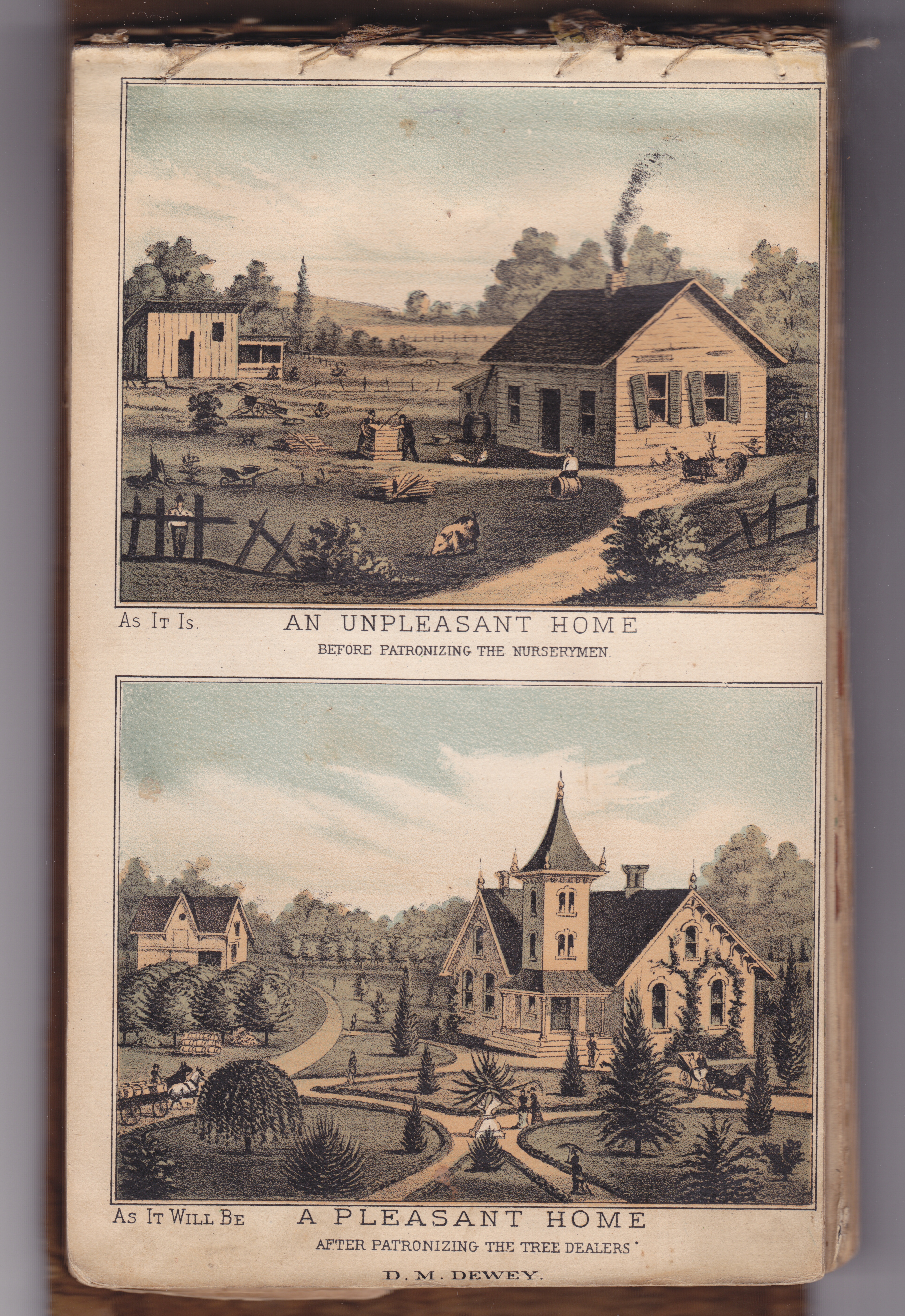Last week I had the pleasure of visiting a private garden on three acres, south…
Garden Advertising Became an Icon Maker
Advertising in nineteenth century America moved from simply product information to creating icons for the culture.
At least that’s want Mary Cross writes in her book A Century of American Icons.
Products became recognizable as brands, linked to a visual symbol that eventually became an American icon.
For example, the Quaker Oats figure sold oatmeal, but the figure became an American icon as well. A consumer did not just buy oatmeal, but Quaker Oats.

Advertising makes icons out of things it sells. The same happened in nineteenth century garden advertising.
The icon makes the product more desirable.
The garden catalogs sold a garden icon, a symbol of what the ideal garden would look like. People could visualize it with its lawn, shrubs, and flowerbeds because they had already seen it in garden advertising.[above]
That garden took on the look of the English garden.
By the end of the nineteenth century garden mass-produced catalogs, garden books, and garden magazines in unison wrote about and illustrated that same garden.
Thus Cross’ idea of advertising creating an icon might well apply as well to the garden.
What are the garden icons today? Where do they come from?
This Post Has 0 Comments